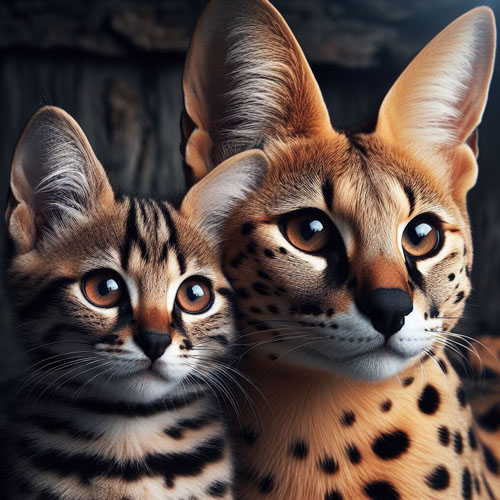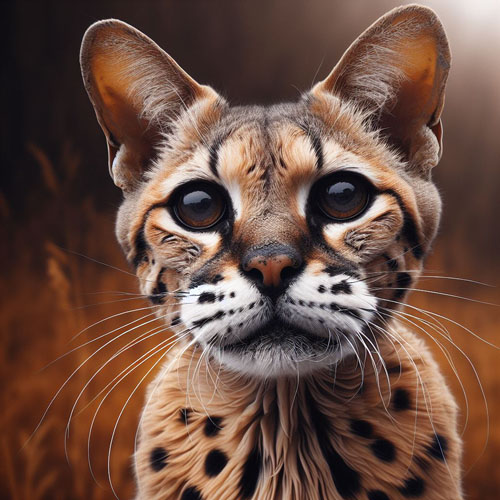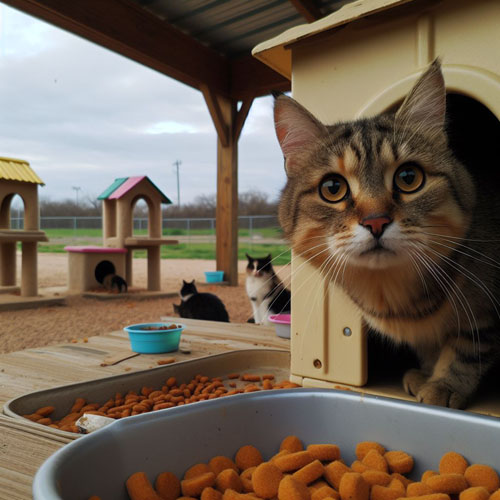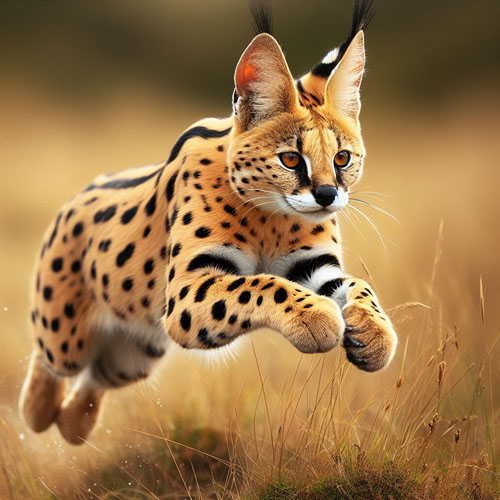Whiskers and Wonders: Unraveling the Chronicles of Remarkable Cats
Cats are fascinating creatures with a myriad of quirks and behaviors that captivate their human companions. From their unique communication cues, such as the slow blink signifying trust, to their uncanny ability to sense scents in the air with an extra organ, cats never cease to surprise us. In the realm of physiology, cats boast retractable claws, specialized whiskers, and a purring frequency that coincides with the healing frequency of muscles and bones. These feline friends, often associated with aloofness, also have endearing traits like kneading, a behavior carried from kittenhood, and the love for sleeping on items imbued with their owner’s scent. Whether it’s their historical significance, as seen in presidential households, or their role as honorary mayors in Alaskan districts, cats weave an enchanting tapestry of facts that showcase their uniqueness and charm.
Here Are Some Interesting Facts About Cat Anatomy & Physiology:
- Remarkably, the genetic composition of a domestic cat is 95.6 percent similar to that of a tiger. They showcase a range of behaviors inherited from their wild ancestors, including scent marking, prey play, stalking, pouncing, chinning, and urine marking.
- Cats are considered unique among mammals as they do not have the ability to taste sweetness.
- While cats may be nearsighted, their peripheral and night vision surpasses that of humans.
- Cats typically have 18 toes, with five toes on each front paw and four on each back paw.
- Cats are remarkable jumpers, capable of leaping up to six times their body length.
- The curvature of cats’ claws prevents them from climbing down trees head-first; instead, they descend backward down the trunk.
- Unlike humans, cats have collarbones that do not connect to other bones but are nestled within their shoulder muscles.
- Cats possess 230 bones, exceeding the human count of 206.
- Cats have an additional organ that allows them to taste scents in the air, explaining moments when they stare with an open mouth.
- Whiskers are not limited to a cat’s face; they also exist on the backs of their front legs.
- Cats have nearly double the number of neurons in their cerebral cortex compared to dogs.
- Cats boast the largest eyes relative to head size among mammals.
- Cats move silently due to the thick, soft pads on their paws, enabling them to sneak up on prey or unsuspecting humans.
- Their rough tongues enable cats to meticulously clean bones of any remaining shreds of meat.
- Cats use their tails for balance when jumping or walking along narrow ledges.
- Whiskers serve as a sensory tool, helping cats assess spaces they can fit into, with their width typically matching the cat’s body.
- Cats have a unique walking pattern, similar to camels and giraffes, moving both right feet first, then both left feet.
- Male cats are more likely to be left-pawed, while females tend to be right-pawed.
- Cats may perceive slow-moving objects as stagnant, despite their ability to detect fast movements.
- Some cats display ambidextrous tendencies, but a significant portion are either left- or right-pawed.
- Surprisingly, some cats can swim, challenging the notion that all felines dislike water.
- Cats with more than 18 toes are known as “polydactyl” cats.
Facts About Cat Health & Wellness:
- Over the decade from 2002 to 2012, a study by Banfield Pet Hospital revealed that a domestic cat’s average lifespan increased by a year.
- Cats typically enjoy 12 to 16 hours of sleep per day, as reported by The Huffington Post.
- Cats are crepuscular creatures, displaying peak activity levels during dawn and dusk.
- Cats are meticulous about their bathroom habits, and if you have multiple cats, it’s recommended to provide one litter box per cat.
- Cats can devote up to a third of their waking hours to grooming.
- Indoor living contributes to a longer life for cats.
- Purring may serve as a self-soothing behavior for cats, occurring in various emotional states, including illness, distress, and happiness.
- Cats may refuse unpalatable food to the point of starvation.
- Contrary to popular belief, many cats are lactose intolerant.
- Female cats can become pregnant as early as 4 months old.
- Certain foods like grapes, raisins, onions, garlic, and chives are extremely harmful to cats, causing kidney failure or gastrointestinal issues.
- Keeping a cat active during the day promotes better sleep at night. Providing a substantial evening meal can also contribute to a good night’s sleep.
- Catnip is believed to produce effects similar to LSD or marijuana in cats, with the effects of nepetalactone, the active chemical, wearing off within 15 minutes.
- Kittens can be spayed or neutered at eight weeks, preferably within the first 5 months of life.
- Neutered males require fewer calories to maintain weight.
- Spaying and neutering can extend a cat’s life, with neutered males living 62 percent longer and spayed females living 39 percent longer, according to Banfield Pet Hospital.
- Grooming is essential for a cat’s well-being, stimulating blood flow, regulating body temperature, and promoting relaxation.
Facts About Cat Communication Cues:
- A cat with a tail shaped like a question mark is inviting you to play.
- According to Wilde, a slow blink from a cat is akin to a “kitty kiss,” expressing contentment and trust.
- Cats develop a unique “vocabulary” with their owners, comprising distinct vocalizations, purrs, and behaviors for each cat.
- Cats boast up to 100 different vocalizations, surpassing the 10 vocalizations of dogs.
- Direct eye contact can be perceived as threatening by cats.
- Cats mark their territory by rubbing their faces and bodies against you, utilizing scent glands in those areas.
- Yawning can serve as a way for cats to de-escalate confrontations with other animals, akin to a “talk to the hand” gesture.
- Hissing is a defensive expression, indicating fear, stress, or discomfort, communicating a cat’s desire for others to stay away.
- In catfights, the cat hissing is often the more vulnerable one, as per Wilde.
- A cat approaching with a straight, vibrating tail signifies extreme happiness.
- Kneading, also known as “making biscuits,” is a sign of contentment and happiness, rooted in kitten behavior when stimulating milk release during nursing.
- Meowing is a behavior developed by cats exclusively for communication with humans.
- Flopping over and exposing the belly may not always be an invitation for a belly rub; rather, it indicates relaxation and trust.
- Retracted claw hits are a playful gesture from cats, not an attack.
- Unlike dogs, when a cat wags its tail, it’s a warning sign that it’s reaching the limit of patience.
- Presenting the butt is a friendly gesture from a cat.
- Whiskers act as mood indicators, with pulled-back whiskers signaling fear and forward-facing whiskers indicating a hunting mindset.
- Draping the tail over another cat, a dog, or a person symbolizes friendship for a cat.
Facts About Quirky Cat Behaviors — And Their Reasons:
- Cats can be particularly choosy about their water source; some may disregard their bowls entirely in favor of drinking directly from the sink faucet.
- Cats engage in allogrooming, a ritual where they groom other cats and occasionally even people.
- Cats have a tendency to sleep on items that carry their owner’s scent, such as pillows and dirty laundry.
- Laundry baskets are favored sleeping spots for cats, providing a combination of hiding places and peep holes.
- Cats may resort to ankle attacks when they’re feeling bored.
- Surprisingly, some cats have a fondness for unexpected foods like olives, potato chips, and the hops found in beer.
- Cats often have an aversion to citrus scents for reasons not entirely clear.
- If your cat goes missing, check in boxes or bags, as these are among their preferred hiding spots.
- Male cats attempting to reach a female in heat may exhibit peculiar behaviors, with some even sliding down chimneys.
- Many cats enjoy licking their owner’s freshly washed hair.
- Some cats are attracted to the smell of chlorine.
- Cats may display thieving behavior, grabbing objects reminiscent of prey, such as stuffed animals and feather dusters.
Facts About Noteworthy Cats in History:
- In 1995, a green cat was born in Denmark, with some attributing the verdigris effect to high copper levels in nearby water pipes.
- Abraham Lincoln, the 16th President of the United States, was an avid cat enthusiast, sharing the White House with four feline companions.
- Maria Assunta bequeathed her entire $13 million fortune to her cat, Tomasso, upon her death in 2011.
- Socks, the cat of President Bill Clinton, gained significant media attention during the Clinton administration and reportedly received more letters than the President himself.
- Stubbs, a 17-year-old orange tabby, holds the honorary title of mayor in the historic district of Talkeetna, Alaska.
Other Surprising Cat Facts You Might Not Be Aware Of:
- A cat’s learning style is comparable to that of a 2- to 3-year-old child.
- The frequency of a cat’s purr, ranging from 25 to 150 hertz, coincides with the frequency at which muscles and bones repair themselves.
- A collective group of kittens is referred to as a “kindle.”
- In a 200-meter dash, a house cat could outpace superstar runner Usain Bolt.
- Approximately half of the world’s cats respond to the scent of catnip.
- Cat breeders are known as “catteries.”
- Cats can be trained to use the toilet.
- Cats have the ability to drink seawater for survival, unlike humans.
- Cats lack an incest taboo, potentially choosing to mate with their siblings.
- Cats experience dreams, similar to humans.
- Cats have played a role in the extinction of 33 different species.
- According to cat behavior expert Layla Morgan Wilde, cats perceive people as large, hairless cats.
- Cats were introduced to the Americas during colonial times to control rodent populations.
- Collective nouns for groups of adult cats include “clowder,” “clutter,” “glaring,” and “pounce.”
- Each cat’s nose print is unique, akin to human fingerprints.
- Every Scottish Fold cat worldwide can trace its ancestry back to the first one discovered in Scotland in the 1960s.
- Cats in big cities are sometimes seen in food stores, serving as free and adorable pest control.
- Kittens from the same litter can have different fathers due to the female cat releasing multiple eggs during heat.
- Male cats are most sensitive to catnip, while kittens under 3 months old exhibit no response.
- Most world languages have a similar word to describe the sound of a cat’s “meow.”
- Purebred cats found as strays or in shelters are rare, as breeders often spay or neuter them before sale.
- Around 700 million feral cats inhabit the United States, leading to trap-neuter-release programs in many shelters.
- Domesticated cats likely appeared around 3600 B.C.
- The first recorded cat video dates back to 1894.
- With approximately 88 million pet cats, they hold the title of the most popular pet in the United States.
- Disneyland’s park is patrolled by 200 feral cats, contributing to rodent control.
- White cats with blue eyes are prone to deafness.
Keywords: Cat Chronicles, Feline Mysteries, Quirky Cat Behaviors, Fascinating Cat Facts, Purrplexing Realms, Whiskers and Wonders, Cat Communication Cues, Enchanting Feline World





